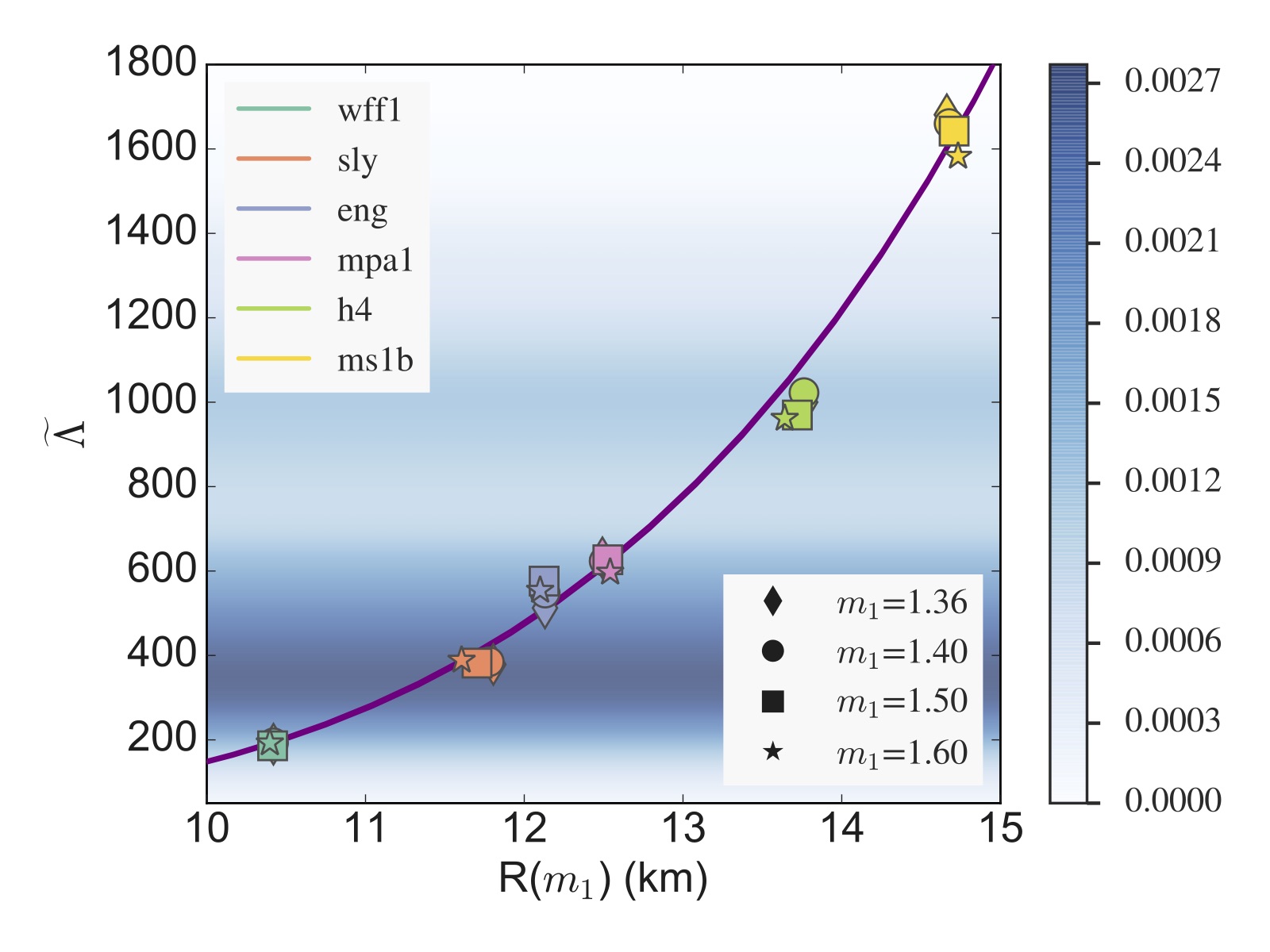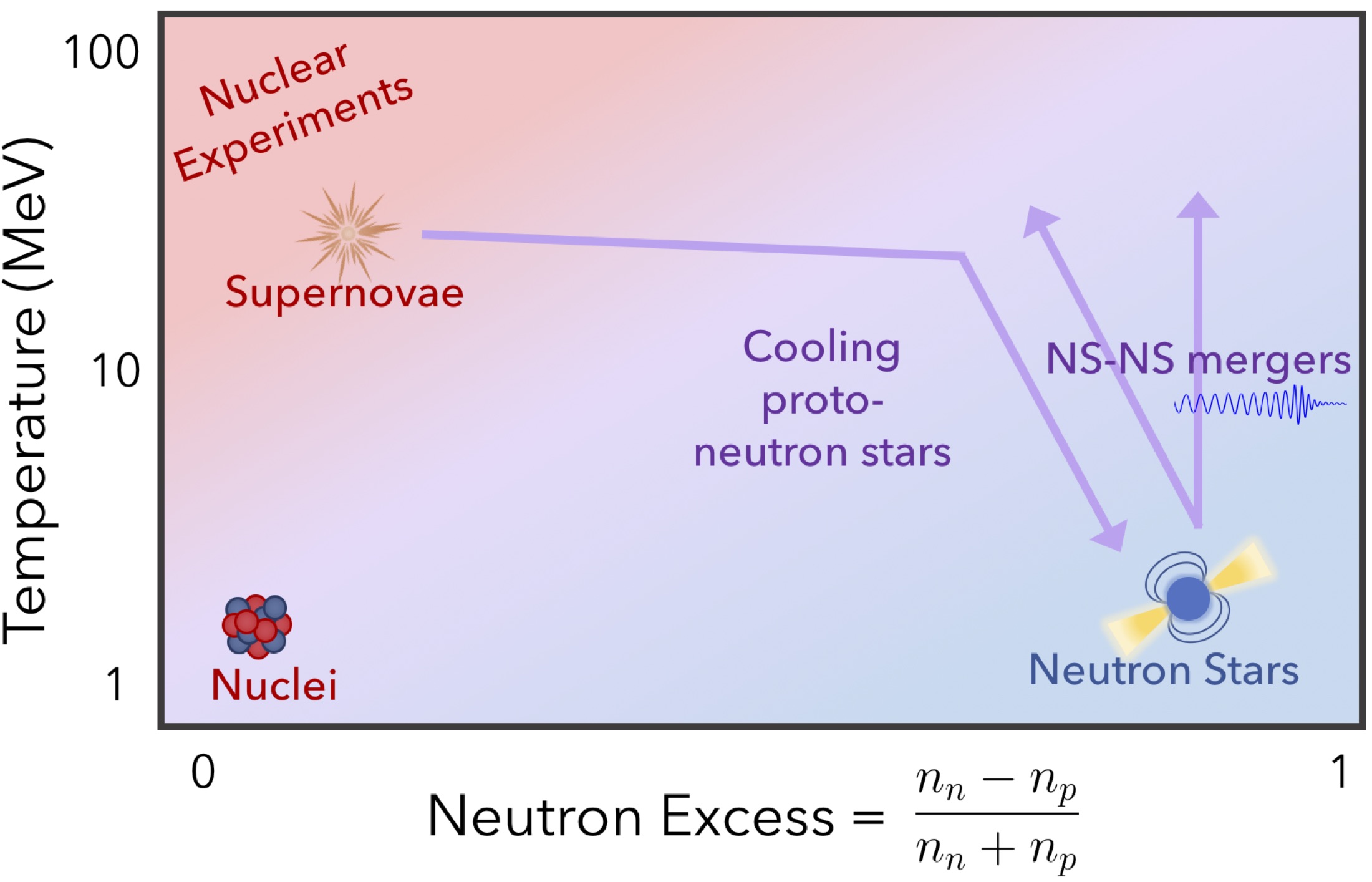Research
Neutron stars
Neutron stars are one of the most extreme environments in the universe. Their central densities exceed 1015 g/cm3, making them several more dense than matter that can be probed on Earth. What happens when matter is compressed to such densities is one of the big questions in modern nuclear physics. My research works to connect astrophysical observations of neutron stars with detailed models of the stellar interior, in order to understand the fundamental nature of ultra-dense matter. This will, in turn, help astronomers better understand observations of a vast array of neutron star phenomena, from core-collapse supernovae, to neutron star mergers and gamma-ray bursts.
 Snapshots from an NS-NS merger simulation using a new framework for calculating finite-temperature effects.
Snapshots from an NS-NS merger simulation using a new framework for calculating finite-temperature effects.
Raithel, Paschalidis, Ozel (2021).
A few select results. For a complete list of my work, see the Publications page.
Tidal deformability and NS radius
In 2017, the LIGO/Virgo Collaboration observed the first gravitational wave signal from the merging of two neutron stars. As part of this discovery, the collaboration was able to measure the tidal deformability of the neutron stars, which tells us how easy or difficult it is to rip a star apart. In analyzing this event, I discovered a new relationship that directly connects the tidal deformability with the pre-merger stellar radius. Radii have been measured for several neutron stars; but the 2017 event was the first ever measurement of a tidal deformability. This new relationship will allow us to directly compare existing radius measurements with new gravitational wave detections.
 Tidal deformability from gravitational wave events as a direct probe of the neutron star radius.
Raithel, Ozel, Psaltis (2018).
Raithel (2019).
Tidal deformability from gravitational wave events as a direct probe of the neutron star radius.
Raithel, Ozel, Psaltis (2018).
Raithel (2019).
Thermal effects in dynamical phenomena
 Range of temperatures and compositions probed by various terrestrial and astrophysical experiments.
Range of temperatures and compositions probed by various terrestrial and astrophysical experiments. Raithel, Ozel, Psaltis (2019).
When we model the interior structure of neutron stars, we can usually assume the star is "cold" -- that is, for old, isolated, neutron stars, they have cooled enough that the thermal pressure is negligible. However, in extreme enviroments, such as during the merging of two neutron stars or in the formation of a proto-neutron star during a core-collapse supernova, the thermal effects become important again. Many previous simulations of mergers and supernovae relied on simplified physics to model these thermal effects, in order to keep the calculations tractable. We have created a new model of finite-temperature effects in dense-matter that includes more robust physics and remains generally applicable to a wide class of equations of state. This model will allow for more accurate studies of the role of thermal effects in neutron star mergers, core-collapse supernovae, and the cooling of proto-neutron stars.